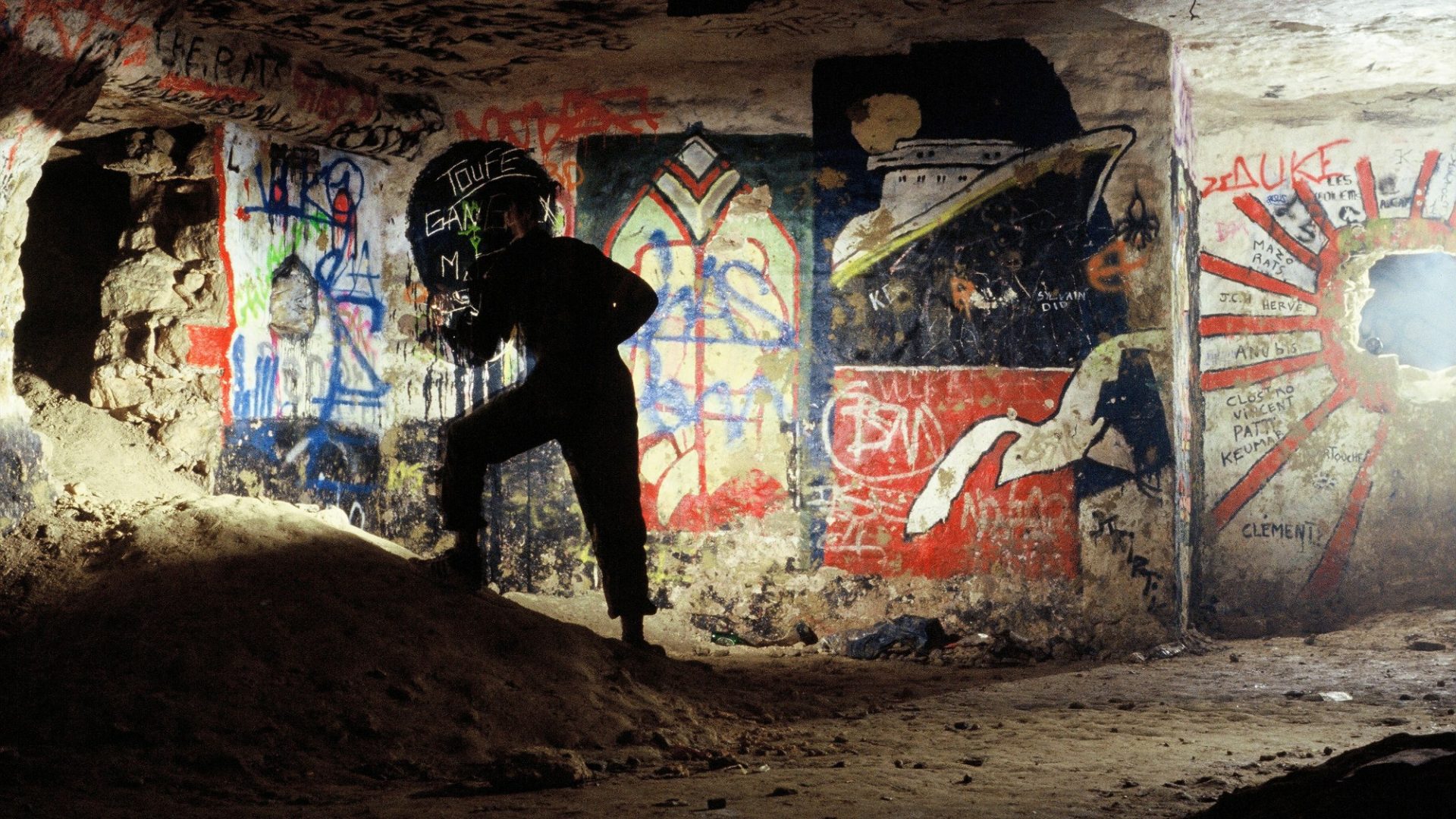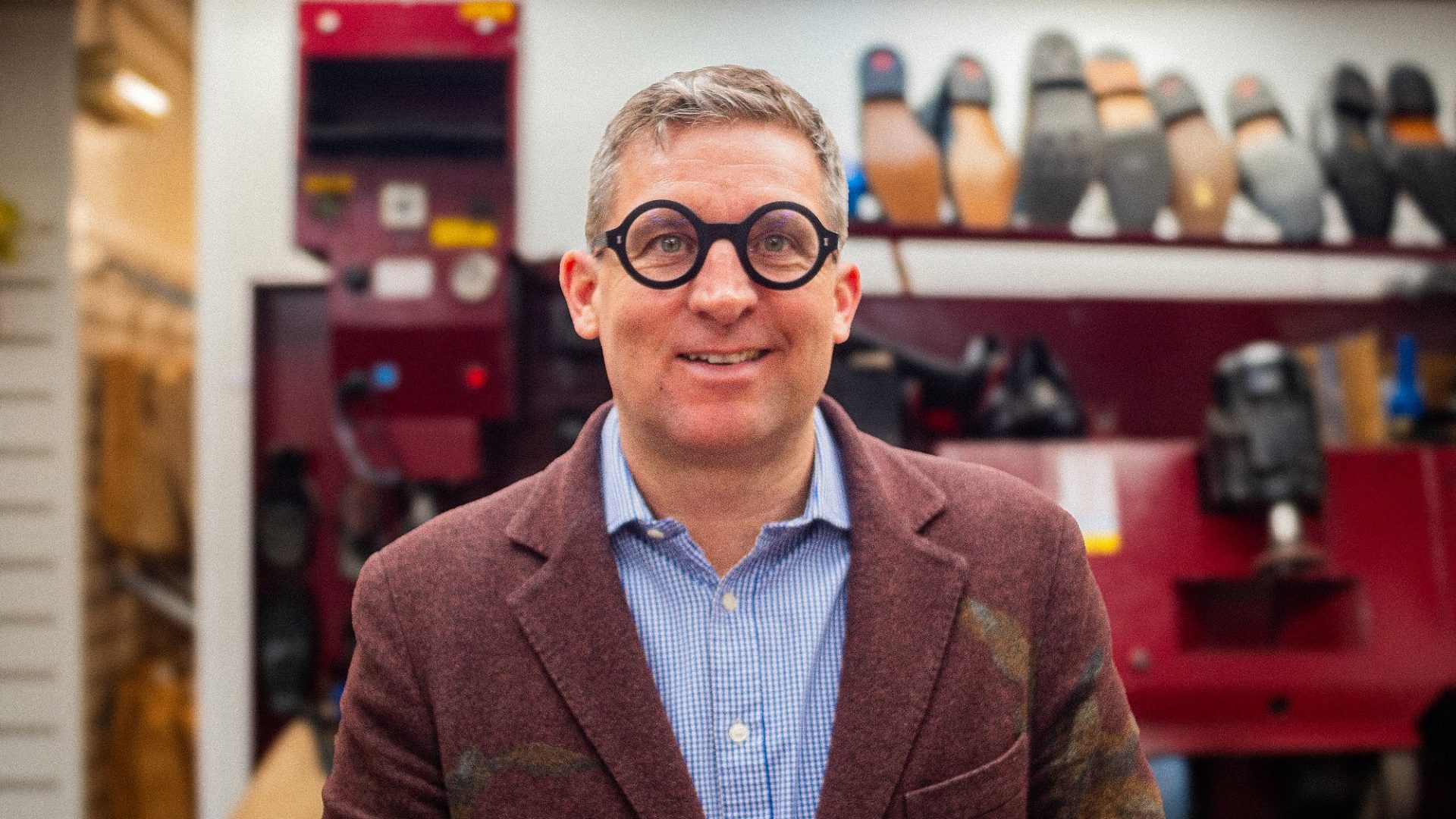In July 2017, three teenage boys from the Paris suburbs climbed down an old manhole near Place Denfert-Rochereau, right next to Montparnasse Cemetery in the centre of the city’s Rive Gauche. Equipped with backpacks and headlamps they set out to explore the catacombs – not the popular tourist attraction, where the bones of 6 million people were transferred from overflowing cemeteries and meticulously stacked in the 18th century, but the other ones. The prohibited ones.
Looking for adventure, they found disaster. They would end up roaming the dark and low-ceilinged labyrinth for hours before the authorities found them lost, cold and traumatised.
“We divided the 200km network into six sections for six teams,” says Sylvie Gautron, the head of Surveillance des anciennes carrières de Paris, the police unit in charge of the search-and-rescue operation. “Each team had someone from our service who is familiar with the network.”
This type of mission is rare in Gautron’s line of work. She is principally in the business of patrolling the banned underground tunnels, engaging in what her team describes as a “game of cat and mouse”. Gautron, along with her colleagues Mathieu and Yanis, are what people familiar with the tunnel network call “cataflics” – a portmanteau constructed from catacomb and flic meaning “cop”. Much of the subterranean vernacular follows this pattern, the people who regularly make their way underground for instance – the mice in the equation – are called “cataphiles”.
A cataflic’s time is divided between two main activities. First patrolling, which involves looking for, booking and, if necessary, administering fines to people who are in the catacombs illegally and, second, assessing to see whether or not cataphiles have done anything to compromise the structural integrity of any given passageway, and report it. Another service that operates under the city’s jurisdiction will then be sent to repair the damage. Gautron and her team are the first to admit that the rules of the game are somewhat stacked against them; they are the only order in what is a kind of anarchy under Paris’s Left Bank.
They cannot block all the entrances because, even if they could find them all, it would only increase the likelihood of people getting stuck. This fact, combined with a lack of phone and radio reception, limited resources and enormous amounts of territory to patrol ultimately make it impossible to stop the flow of cataphiles and effectively police their behaviour.
It is impossible to know how many people go down there, Gautron says. There are a lot of high school students, but in the same way that teenagers pick up and drop skateboarding, by the time they enter their professional lives, most of them will never return to it.
In her almost 20 years in the job, Gautron estimates there to be a constant base of about 500 genuine cataphiles who wander the galleries on a regular basis. “I’ve said that in the past, but more recently, we think there are a lot more people than normal,” she says.
In Gautron’s crew, it is Mathieu who is the most fascinated by his work. Since coming to the service by chance four years ago, he seems to have found his passion. “It is a subject I am particularly fond of,” he says. “I try to get my hands on any books that deal with the catacombs. I often collate and cross-reference information because there is a lot of mythology and contradictory history,” he adds.
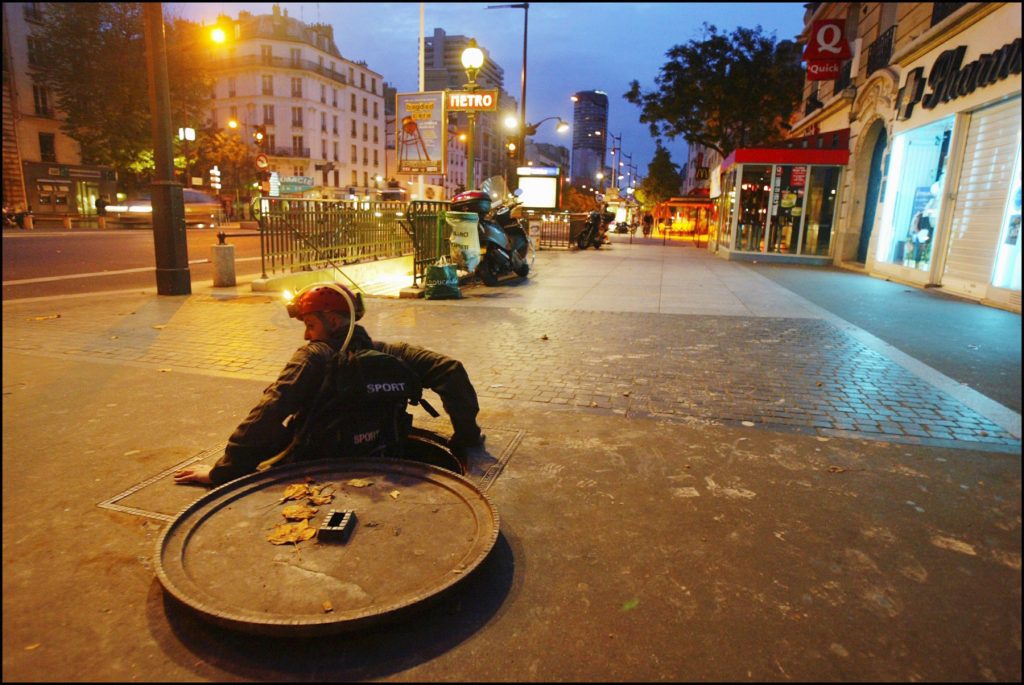
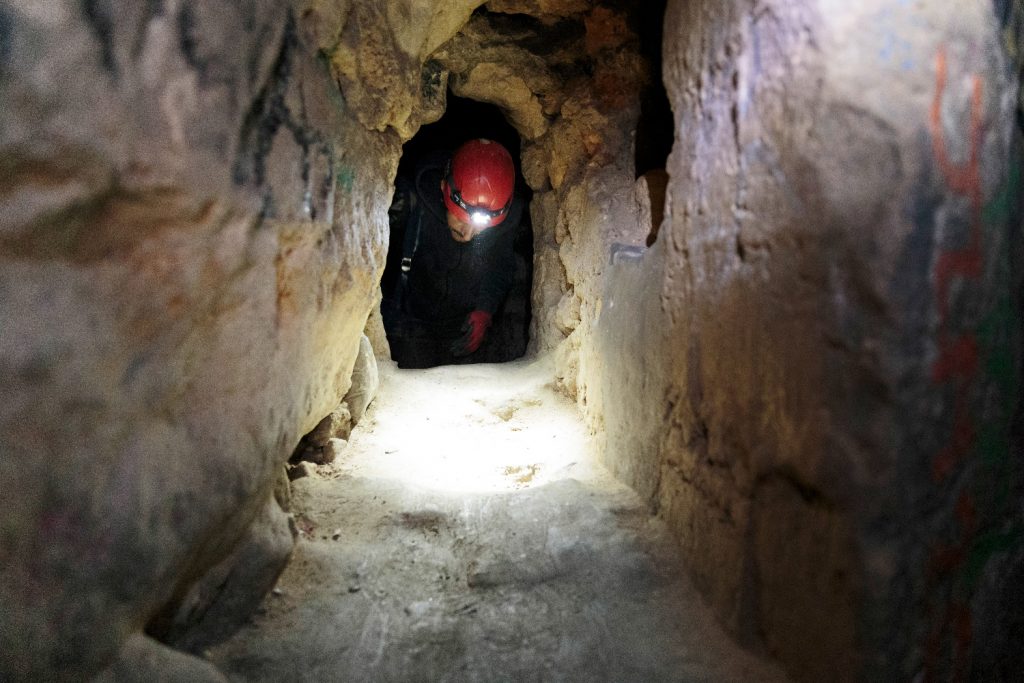
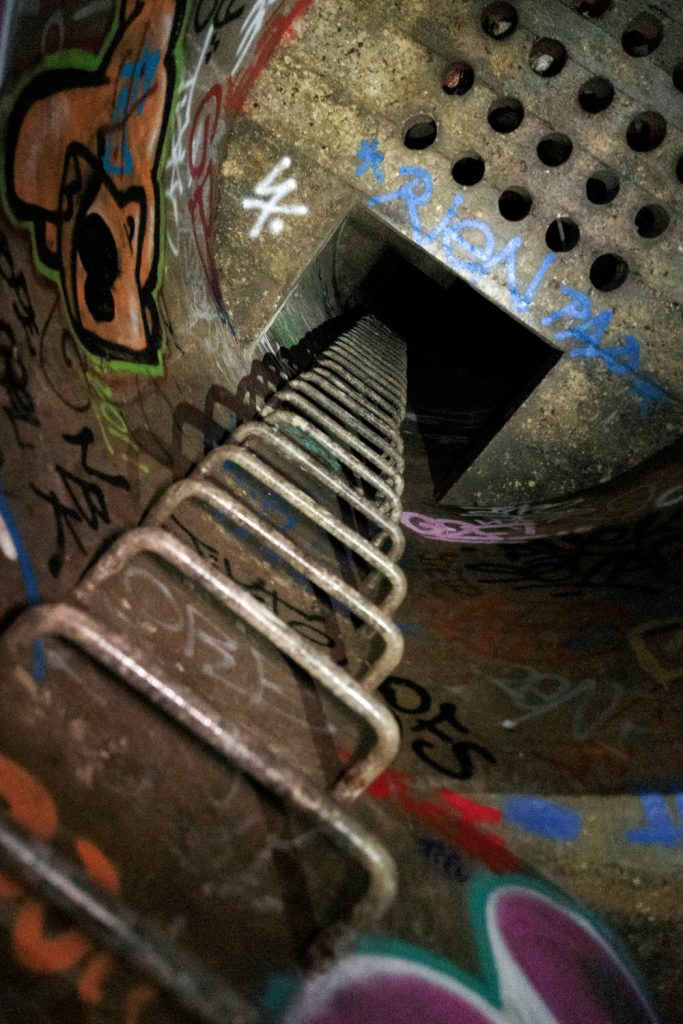
As we walk through the narrow corridors, sometimes 25 metres underground, making sure not to knock our heads or get our feet too wet, Mathieu routinely lags behind, shining his little torch, inspecting for clues left by cataphiles so he can get inside their heads or let them get inside his.
At one point he reaches his arm into a gap and pulls out a small plastic bag with an even smaller square of paper in it. The paper has the letters “LSD” printed on it. “It’s almost certainly fake – maybe a joke for another friend, or maybe a ruse to make us waste our time – but we’ll have to test it anyway,” he told me as he placed it carefully into a safe zip pocket.
At one stage during my tour, Gautron sent Yanis down a particular corridor. After waiting what must have been three minutes for him to return, we followed his footsteps and found him in the process of waking up a couple in their early 20s who had spent the night in a couple of hammocks. I listened and watched as they were asked how they had entered, whether they frequented the catacombs and if they had heard anything relating to some rumours circulating about sexual assault.
The police searched their belongings and, to the young man’s disappointment, found a small ball of hashish, which was crushed into the ground by a black steelcapped boot directly in front of him. After taking their details to send them a fine (a modest €65), they let them leave of their own accord – they were perfectly cooperative, albeit a bit frustrated and still half asleep.
As is often the case with subcultures, cataphiles are the victims of misperceptions about what it is they do with their time. While it is true that some people use the tunnel walls as graffiti canvases, throw raves and take recreational drugs, often leaving a mess as they do, many engage in more wholesome activities.
Some throw underground dinner parties. There are amateur – but handy – masons who spend days excavating rooms for themselves. Others even organise “catacleans” to remove the mess left by others. Mathieu highlights this point. “They are just as diverse as the people who walk the streets above them.”
As well as a determination to keep their sanctuary to themselves, these generalisations are why cataphiles have a history of hostility towards the media. In my attempts to find one willing to talk, I was rejected numerous times.
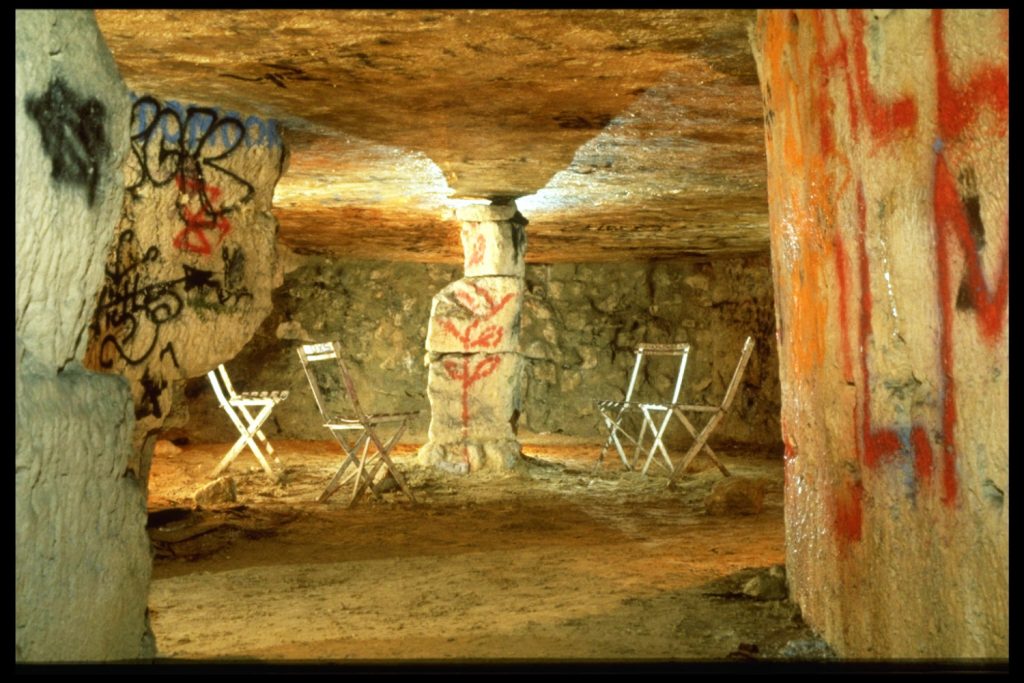
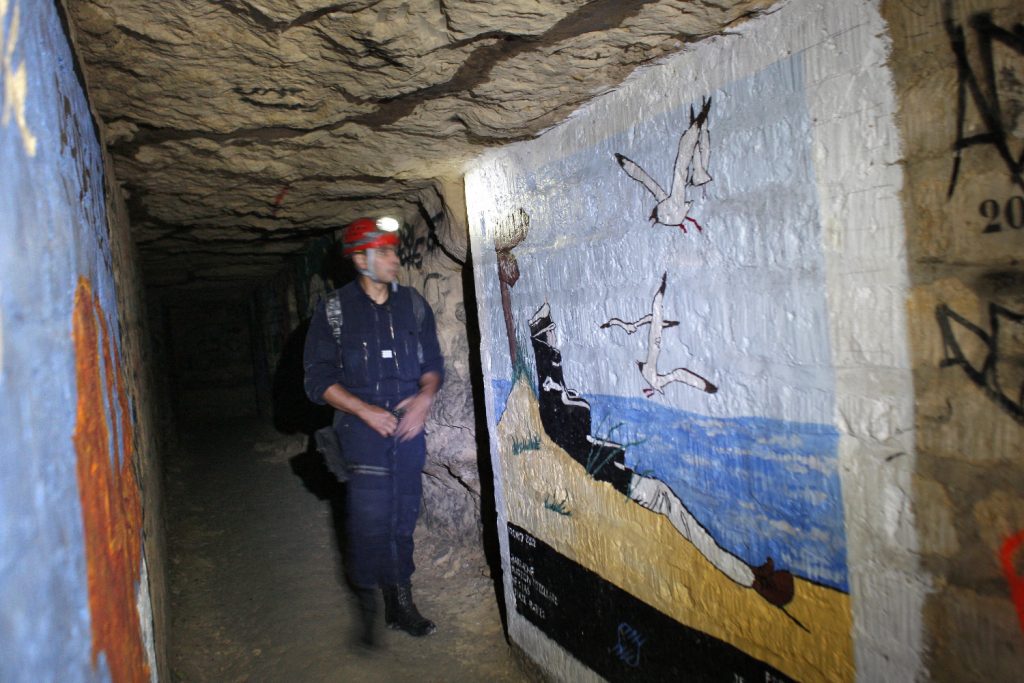
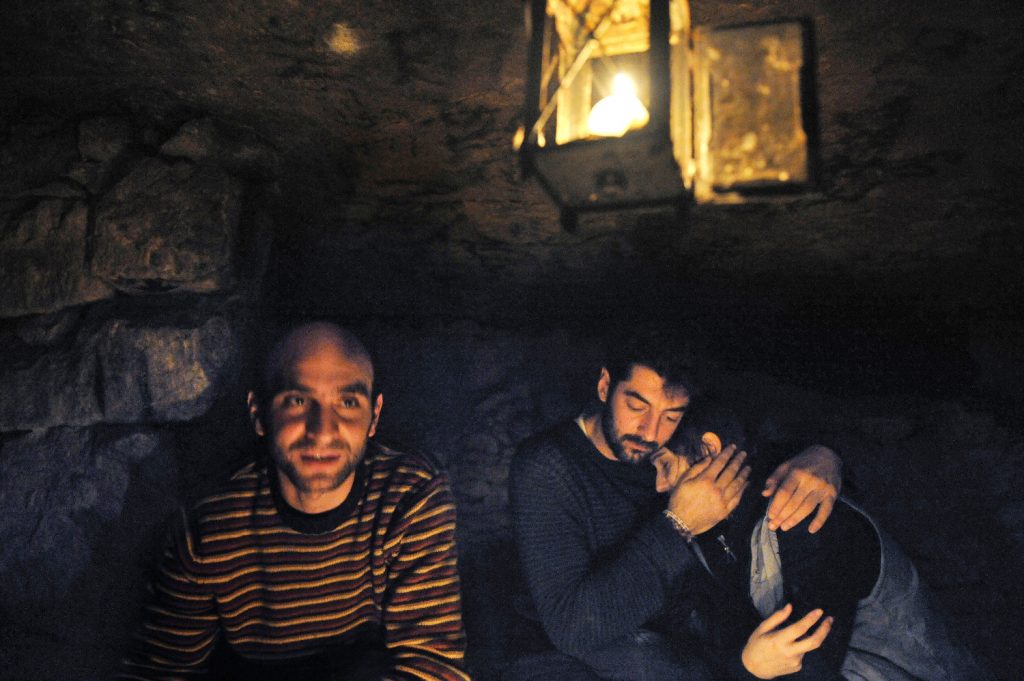
“Cataphiles are really against talking to journalists, quite vehemently,” the writer of Les Souterreux, probably the only exclusively underground newsletter in the world, told me. “So even for you, I don’t know if it’s a very good idea to write the article.”
One person, who I’ll call JB, agreed to speak to me on condition of anonymity, in a bar in the 11th arrondissement.
Echoing Mathieu’s sentiment, JB says cataphiles vary in attitude, experience and what draws them beneath Paris. The proper cataphiles, he says, wear waders like trout fishermen. If the brand has been scratched off by the narrow walls, the person wearing them is the real deal. The most serious of them carry old-school miner’s lamps because “despite being impractical, the light is more authentic”.
For his part, JB always liked the idea that he could escape from the connected world of mass internet coverage, like when he was a kid. He liked the adventure of it. “It’s just like cave diving or mountaineering in a sense,” he said. “You carry maps, which will sometimes be wrong or even fake. Finding places no one has been before is great.
“There’s a phrase, it’s a bit cliche but I think it gets to the point: ‘La monnaie dans les catacombes c’est l’information’ (Information is the currency of the catacombs). The idea is that because there is no actual money, the more you know, the richer you are,” said JB. “Sometimes you’ll meet people and you’ll share what you know, other times, you’ll guard what you know with your life.”
In an estimated 60 descents, JB only had one run-in with the police, attending a “catalloween” party in 2021. Gautron and her crew took his details and put him on a list, but did not fine him. He was lucky; the following year, nearly 200 fines were administered.
One of the many peculiarities of the catacombs is that they are technically not catacombs at all. Except for the touristy ossuary, they are almost entirely vacant of bones. They are in fact old limestone quarries, from which the stone came to build the city above.
This is a point Gilles Thomas likes to point out. The author of several books, Thomas has dedicated his life to researching and dispelling the many myths that surround the catacombs (or quarries, or whatever you want to call them). Incidentally, Thomas is credited in the film Ratatouille for his work helping animators understand what they were to draw.
“The quarries are the roots of Paris itself. The only reason Nôtre-Dame is still standing – well, I mean the rest of it – is because it is built from limestone. In 1666, London burned down. Paris has survived. These quarries are the reason.”
Throughout his career, he has witnessed the rapid deterioration of catacombs because of a small number of people looking for clout, or, in Thomas’s terminology – which he borrowed from an anthropologist – “cataclastes”.
Until the 1980s, Thomas explains, there was little to no graffiti in the catacombs. “The people who descended before that were curious or simply interested in the history or geology,” Thomas says. “Now one man with a spray can is able to destroy a whole room in a matter of hours.”
I met Thomas in the only remaining section of the tunnel network unspoilt by graffiti, where history is still present. Directly under Cochin hospital in the 14th arrondissement, it is protected and maintained by an association named la Société d’études et d’aménagement des anciennes carrières des Capucins (Seadacc), run by what seemed like mostly elderly gentlemen. Here you can still see the engravings of 18th-century revolutionaries, 19th-century lovers and 20th-century second world war resistance fighters.
As longstanding taboos about sharing information online wane, it is becoming increasingly easy to access maps and information about the catacombs. The persistent will succeed. This increases the likelihood of inexperienced people going to a place that is ultimately quite dangerous.
The story about the three boys in July 2017 is a cautionary tale. The mission to save them was made all the more difficult by one of the teenagers’ reality-defying confidence in his sense of direction, says Gautron.
French media reported that when Gautron’s crew found them, three days after they climbed down the manhole near Place Denfert-Rochereau, all three were showing signs of hypothermia and were taken directly to hospital. One in particular was in a very bad way, says Gautron. “He could barely move,” she says.
“The best thing to do in that situation is stay put. But they kept moving. We would find a note that said: ‘We are lost. We were at this point, at this time, we are heading south’… But we found them about as far north as you can be … they had no idea what they were doing.”

